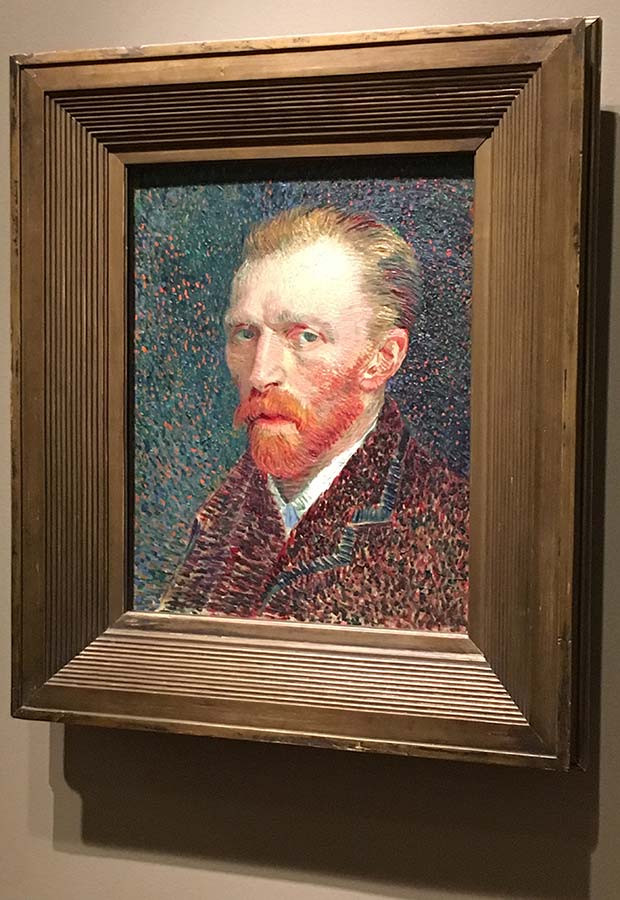Art is a central means of communication, one that is uniquely human and dates back to over 30,000 years ago. From the earliest cave paintings to urban graffiti, art has been part of our everyday lives.
 Today, however, we live in an age dominated by images. On a whim, we can produce images and share them with the world in seconds. We are constantly bombarded with television screens, advertisements, and internet images to the point that we hardly give them notice.
Today, however, we live in an age dominated by images. On a whim, we can produce images and share them with the world in seconds. We are constantly bombarded with television screens, advertisements, and internet images to the point that we hardly give them notice.
Despite this constant barrage of images, over 15,000 people per day pay pour into a room to stand beside countless others to catch a brief glimpse of a small portrait painted in 1503 by Leonardo da Vinci – the Mona Lisa. There are plenty of reasons to appreciate the Mona Lisa, including the incredible attention to detail, perfect rendering of skin tones, use of light and shadow, that expression between a smirk and a smile, and the technical aspects of the composition. Not only that, the history and provenance of this painting is mesmerizing. The picture once hung in Napoleon’s bedroom. It was stolen in a major art heist in 1911. Google “Mona Lisa” and you immediately have over 27 million hits with every viewpoint of the painting, not to mention every possible parody. Even with this ease of access to images and information, people continue to stream to the Louvre each and every day as there is something more to seeing an incredible work of art in person.
Some people have described extraordinary paintings as having an aura. This experience is difficult to put into words. It is something that master painters have perfected after thousands of hours of practice. All the colors, texture, contrast, and scale are working together, drawing you into the painting, bringing it to life. While the painting is technically two-dimensional, in reality, a closer look brings out the gestural quality of the brush work, varying thickness of paint layers, translucency of washes, and the patina of age. These subtle variances in topography assist in transforming the image into a three-dimensional object in your mind. The image jumps off the wall, grabs your attention, and keeps you looking. As you look deeper, you might begin to think about the artist, wonder who they were, what they were thinking, what emotional response they were hoping to instill in their audience. Then perhaps you reflect on your own interpretation of the work – the message you think it conveys, your emotional response, whether you like the image or not. In that moment, that work of art has come to life. As Vincent Van Gogh once said,
“Paintings have a life of their own that derives from the painter’s soul. They serve as a window into the life of the artist.”
I have never been to the Louvre or seen the Mona Lisa, but I have experienced this artistic aura.

Look at Van Gogh’s style in this self portrait with the wild dashes of color against the dark background that make the red of his beard pop from the canvas. You can see in his eyes that there is torment. His face is emotionless amidst the frenzy of brush strokes, perhaps a reference to his creative haven in the surrounding psychological storm. You get a sense of this from the photograph but in person at the Art Institute of Chicago it is an entirely different experience. The first time I saw this painting, I walked into the gallery and was completely alone. The painting was behind me, and I had a sense that someone was watching me. I turned around to see Van Gogh’s self portrait and was completely spell-bound. I had a few minutes to get up close, really close to the painting, and study it before a group of people entered the room, and I had to move on. I quickly snapped this picture. For those moments, I was looking into his soul, feeling what he felt, seeing what he saw in himself.
This is why art still matters!
So what should you do? Go visit your nearest museum. Walk through the halls until you find a piece that resonates with you for whatever reason. Stop, sit, take it in, spend time with the piece, get close, evaluate the technique, breathe in, smell the painting, picture the artist making the work (how was it done, what were they thinking, etc), spend a half hour, take a picture if you can. Go home and write down your thoughts – how you felt, and what it meant it to you. Take note of who painted it, when and where it was done. Does where and when it was made have any bearing on the style of art? Search out other artists with a similar style or from a similar timeframe. Find the art movement that moves you! Explore other art venues and repeat.
If you feel like sharing this experience or why art matters to you, send us your thoughts, we would love to hear about it. If you are not yet part of our community, please join our email list, or find us on Facebook and Instagram!





